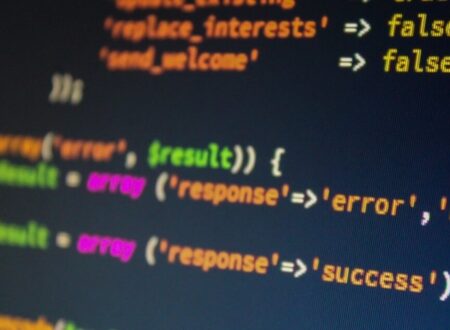Peer Code Review: What Is It and Why Do You Need It?

Code review is a process by which developers review each other’s source code. Peer code review not only makes a better code but also makes better teams.
The two roles present in a peer code review are –
- The author: A person who is responsible for developing the code being reviewed.
- The reviewer: He is the person who is responsible for examining the code.
Commonly used forms of peer code review
Over-the-shoulder code review
In this type of review, the author writes a code and calls the reviewer over to have a look at it.
Benefits
- Easy to implement
- Fast to finish

Email pass-around reviews
Most open-source projects prefer this form of code review. Here, the author emails complete files to reviewers. Reviewers then examine the files and suggest changes.
Benefits
- Works with remote software developers
- Easy to implement
- Easy to involve other people
- Doesn’t disturb reviewers
Pair-programming (review)
In this form of code review, two developers write code together at the same workstation.
Benefits
- Effective at promoting knowledge-transfer and spotting bugs.
- The reviewer is very close to the code and can provide a detailed review.
Tool-assisted code review
Reviewers and authors use specialized tools designed for code review. The tools are used in all aspects of the peer code review: collecting metrics, transmitting and displaying files, commentary, collecting files etc.
Benefits
- Automated file gathering
- Workflow enforcement
- Automated metrics collection

Why do you need to devote time for code reviews?
HIGHER CODE QUALITY
While QA testing is absolutely essential to improve the performance of your final product, code reviews are just as important. Source code reviews guarantee a higher quality code base. Not only do they improve software performance, they also allow you to expand your product and add new features much more easily in the future.
Higher code quality also leads to less time spent in handling technical debt and resolving errors. Technical debt, also known as code debt, is the expense a software company pays out due to poor development processes within its existing codebase. These debts should be resolved as quickly as possible.
Codacy conducted research and found that software developers spend about 26% of their time working on technical debt and on fixing bugs. According to the same research, code reviews have the greatest impact on the quality of the code, followed by coding style and standards and testing.
REDUCED COSTS
The earlier a bug is spotted, the less it will cost to resolve it. Discovering and resolving errors at the early stage of development is relatively less costly as compared to the expensive process of bug fixing happening at the advanced stages of software development. An external reviewer can quickly, and easily spot mistakes made by software developers.
IMPROVED DEVELOPMENT PROCESS
In addition to fixing bugs and improving software quality, code review improves your software development processes and the team as a whole.
TRAINING NEW, LESS EXPERIENCED DEVELOPERS
Code review helps development teams train new developers and familiarize co-workers with other modules. The process of code review encourages the sharing of ideas across the team and provides an opportunity for new developers to acquire skills and improve their code’s performance. These younger developers also get an opportunity to sharpen their skills and become experts in their field. The reviewers also get to learn new ideas and techniques from the code they are reviewing.
BETTER ESTIMATES
Code review helps in sharing of knowledge between the reviewer and the author. The reviewer is quite familiar with the known issues in the code base and the complexity of the project. Therefore, the development team members get to know the product in detail and the software developers learn to make better estimates of the future work from the reviewer.
CONSISTENT CODING STYLE
Code review enforces a consistent coding style throughout a software project. This makes the code readable by developers who might have joined the project at any given time during software development.
While this might seem like a trivial matter, you can save a ton of time and resources on the long run if the source code is easy to read. This is especially crucial if we are talking about a huge code base.

To Summarize
Peer code review should be an integral part of every software development process. Apart from fishing out errors in time, your team will also learn to work together more effectively. Less experienced developers can also learn a lot from their senior colleagues during this process.
Choosing which method you’ll use depends on your preferences and team setup. The important thing is to start implementing reviews into the development process as soon as possible.
If you would like to learn more, read about our team’s approach to conducting code reviews.

In here we talk about our process, what tools we use and what are the most crucial aspects during reviews.


